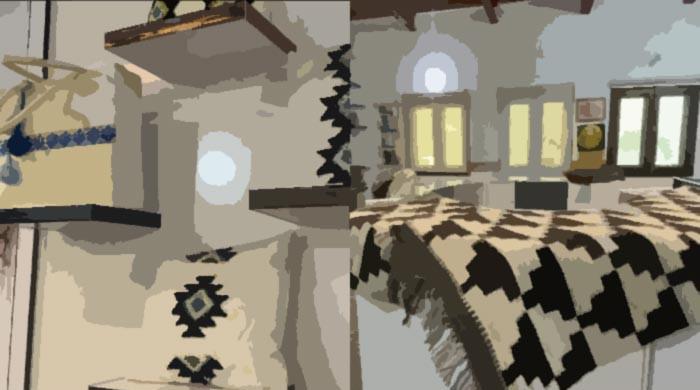
In the mountains of Hunza, a group of special artisans is quietly preserving a vanishing piece of the region’s heritage — the Sharma, a traditional hand-woven rug made from goat hair.
Sharma, once a common household item in Hunza, is now becoming rare, with only a handful of people still keeping the craft alive.
When Brackly Digital explored this fading tradition, it discovered a small centre in Hunarkun, Hunza, where people with disabilities are working tirelessly to protect it.
Established in 1966 by a local organisation, the centre trains special individuals in different crafts to help them become self-reliant and confident. They are also paid for their work — a gesture of appreciation for their skills and dedication.

Among them is 52-year-old Karim, who lives with an intellectual disability and plays a key role in making the Sharma, shared how proud he feels to contribute to his culture.

“I feel happy when I work with my hands,” he said, adding, “The money is nice, but the real joy comes from knowing I’m helping to keep our culture alive. If we don’t protect it, this heritage will disappear.”
Sultan Azam, who supervises the artisans, explained that making a Sharma is a detailed process.
“It starts with collecting goat hair, which is then washed, dried, and sorted. After that, it’s spun into thick yarn — called Talow in the local Burushaski language — by a blind craftsman named Ishaq,” he said.

Once the yarn is ready, the spinning and weaving stages begin. Each person is assigned a role based on their abilities.
“Every person’s weakness becomes their strength here,” Azam explained. “For instance, blind artisans have such sensitive hands that they can work as precisely as sighted craftsmen. Those with intellectual disabilities help with sorting and handling materials, while trained artisans handle the weaving tools.”
Azam shared that the Sharma rugs are a big part of Hunza’s cultural identity.
“In the old days, every home had a Sharma — used as a floor rug, placed under tables, or at doorways to welcome guests. Some were even hung on walls as a decorative piece. You can still see them in Hunza’s historic Altit and Baltit forts.”

Made from black, brown, and white goat hair, these rugs are known for their durability and beauty — often selling for thousands, sometimes even hundreds of thousands of rupees.
“The demand for brown and black Sharma is especially high,” Azam said. “That’s because goats with such hair are becoming rare, and finding their hair is a challenge.”
Women also play a vital role in preserving Hunza’s traditional crafts. Many create intricate hand embroidery pieces displayed alongside Sharma rugs at the centre.
Khushhan Bano, 44, who also lives with an intellectual disability, takes immense pride in her delicate hand embroidery.

“People often say, ‘Why do this by hand when machines can do it?’ But the designs I make can’t be created by a machine,” she said. “It’s very fine, detailed work — and I love doing it.”
She added that being able to contribute to her culture gives her a deep sense of joy and purpose.
Today, their handmade rugs and embroidered pieces are displayed for tourists visiting the centre — each item telling a story of resilience, creativity, and pride.
These special artisans of Hunza are more than just craftspeople — they are the heartbeat of a culture that refuses to fade away.
Discover more from Brackly News
Subscribe to get the latest posts sent to your email.



